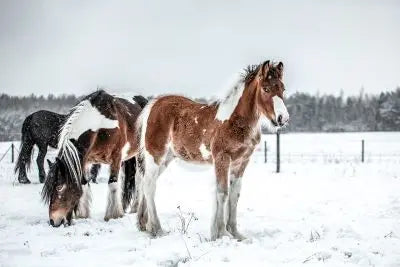From £6.99

Top tips for managing poor doers in the winter
- Feed ad-lib hay/haylage whether your horse is stabled or in the field
- Feed the best quality forage you can, and have hay/haylage tested for nutritional content where possible, as hay can be as good a source of calories as haylage
- For older horses who may struggle to chew long stem forage, look for short stem forage alternatives that can be bucket fed
- Forage and fibre is an excellent source of slow release energy, assisting improvements in condition
- Both the forage itself and the saliva created by chewing help to settle the stomach and reduce feelings of stress, particularly useful if your horse is stabled in winter or has an anxious temperament
- When looking at chaff and other conditioning options (such as mashes), many are available with an oil coating
- Alfalfa is a preferred chaff option (if suitable) due to higher calorie and protein content
- You can add oil separately to the diet, make sure the diet contains antioxidants and vitamin E (in all Blue Chip balancers)
- Feeding a balancer from a treat ball provides interest for stabled horses, and can help both flexibility and support in developing top line
- Look for feed balancers which support top line development with highly digestible protein, at least 16%
- Feed a balancer to ensure your horse continues to receive the vitamins, minerals, nutrients, quality protein and probiotics they need to maintain long term good health
- Keep meal sizes as small as possible, and feed more often
- Large meal sizes can hamper digestion, missing the opportunity to absorb calories and nutrients, and can also increase the risk of colic.
USING A WEIGH TAPE TO HELP
Using a weigh tape, start tracking and recording weight weekly from summer/early autumn. This will show losses before your eye may see. This enables you to be proactive in increasing calorie provision in good time.
Pass over the lowest point of the wither and under the belly where the girth would lie. Apply slight tension to read the weight in kg.
Don't forget the dentist!
Maintain your horse's dental health to aid calorie absorption and
improve digestive health. Pain can cause horses' to stop eating.
Rugs for retained calories
If your horse gets cold, they will burn calories to generate warmth.
Keep them warm and dry to retain those valuable calories.
Act Early
Think about tracking your horse's weight from the grazing season,
when you notice a trend of weight loss, you are able to react
quickly and in good enough time to prepare for the winter months.
Further feed
Beyond ad-lib quality forage, and a feed balancer to help maintain and/or develop top line you are likely to need additional provision of calories, firstly look to a conditioning chaff, this can be further supplemented by feeding a conditioning cube beet or mash, plus oils too.
Don't veto the vet
If you are worried about your horse's weight loss, please do consult your vet for advice.

